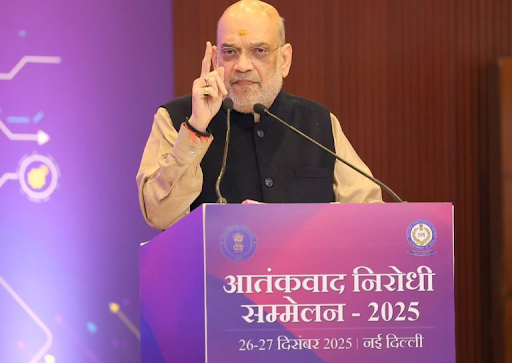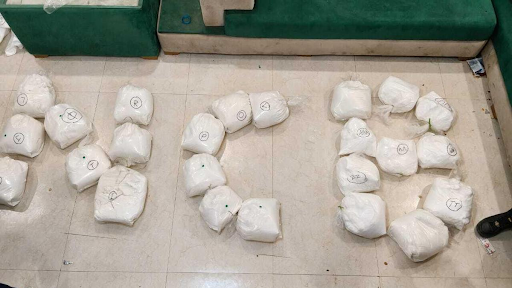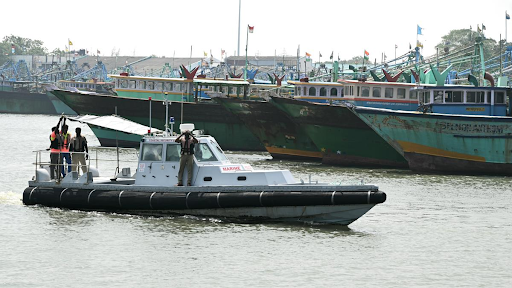




Source: EFE
Disclaimer: Copyright infringement not intended.
The announcement of the Golden Dome missile defence shield by U.S. President Donald Trump marks a potentially revolutionary leap in the militarization of space and the evolution of missile defence systems.
Modeled loosely after Israel’s Iron Dome this $175-billion project with an ambitious deadline of 2029 aims to create a space-integrated, multi-domain defence architecture capable of intercepting hostile missiles including Intercontinental Ballistic Missiles at various phases of their flight.
Concept and Components
The Golden Dome is envisioned as a comprehensive missile defence shield that utilizes:
Space-based sensors
Satellite-launched interceptors
Land and sea-based radar and tracking systems
It seeks to provide real-time global missile tracking and interception including neutralizing missiles moments after launch.
Technological Breakthrough
Would be the first operational space-based weapon system transitioning from current satellite-based reconnaissance to offensive-defensive interception capabilities.
Includes the deployment of thousands of small satellites capable of early detection and interception.
|
Feature |
Iron Dome (Israel) |
Golden Dome (USA) |
|
Type |
Short-range, ground-based |
Long-range, multi-domain (including space) |
|
Deployment |
Land-based interceptor batteries |
Space-based interceptors + land/sea sensors |
|
Targeted threats |
Rockets, UAVs, artillery shells |
ICBMs, hypersonic missiles, long-range threats |
|
Scale |
National (small geographical region) |
Global/national (entire US homeland) |
|
Technology |
Radar tracking, no satellite involvement |
Satellite-based detection + interception |
Israel’s Iron Dome protects against short-range threats primarily from non-state actors. The Golden Dome targets strategic threats from peer adversaries like Russia and China especially nuclear-capable ICBMs.
Need for Advanced Missile Defence
ICBMs and hypersonic threats from adversaries like Russia and China pose strategic risks.
Existing ground-based systems e.g., THAAD, GMD are insufficient against high-speed, multi-phase threats.
Militarization of Outer Space
Golden Dome would represent the militarization and weaponization of space previously governed by strategic restraint e.g., Outer Space Treaty, 1967.
Raises concerns of an arms race in space with potential countermeasures from adversaries.
Legacy of the Star Wars Program
Trump invoked Ronald Reagan’s Strategic Defense Initiative from the 1980s popularly called Star Wars.
SDI aimed to deploy space-based missile defences but failed due to technological constraints.
Golden Dome is presented as its modern successor with advancements in miniaturized satellite tech, AI, and space launch capabilities.
Feasible in concept, but:
No tested space-based interceptor system exists.
Deployment of thousands of satellites requires massive coordination.
Hypersonic intercept capability in exo-atmosphere remains largely theoretical.
Cost and Timeline Concerns
No operational prototype exists.
Project is currently in conceptual phase only.
Initial Congressional support: $25 billion tied to a contentious defense funding bill.
Industry Involvement and Controversy
Companies pitching involvement:
SpaceX, Palantir, Anduril (close to Trump).
Traditional defence contractors like Lockheed Martin and Raytheon.
Procurement transparency, cronyism and conflict of interest concerns raised by Democratic lawmakers.
For India
May reshape the global missile defence discourse.
Could inspire India to accelerate:
Indigenous systems like Ballistic Missile Defence (BMD) Phase II.
Space defence initiatives such as DRDO’s Project NETRA and ASAT (Mission Shakti).
Raises the possibility of greater Indo-US space security cooperation or pressure to join similar programs.
For the World
Could trigger a new space arms race.
Erodes norms around peaceful use of outer space.
Forces other countries to explore space-based deterrents or asymmetric strategies (e.g., cyber, EMP).
|
Feature |
Golden Dome (USA - Proposed) |
India’s BMD Programme (Operational/Developmental) |
|
Objective |
Create a futuristic, space-based missile shield to defend U.S. territory |
Establish a two-tier defense against ballistic missile threats |
|
Proposed/Initiated by |
Donald Trump (2025) |
DRDO, Ministry of Defence (since early 2000s) |
|
Operational Status |
Conceptual; expected by 2029 |
Phase-I tested; Phase-II under development |
|
Coverage Area |
Nationwide, global (space-based interception) |
Urban centers and critical installations (limited regional deployment) |
|
Technological Base |
Space-based sensors, AI, satellite constellations, hypersonic interceptors |
Ground-based interceptors, long-range radars (Swordfish), AAD & PAD missiles |
|
Tiers of Defence |
Multi-domain (land, sea, space); details unclear |
Two-tier system: exo-atmospheric (PAD/PDV) and endo-atmospheric (AAD) |
|
Anti-Satellite Capability (ASAT) |
Implied through space weaponization |
Demonstrated via Mission Shakti in 2019 |
|
Main Threat Targeted |
ICBMs, hypersonic missiles (from China/Russia) |
Intermediate and long-range missiles (mainly from Pakistan and China) |
|
Interception Platform |
Primarily space-based; thousands of micro-satellites planned |
Ground-based launchers with radar coordination |
|
Radar System |
Space-based sensors; likely to include ground-based X-band and advanced radars |
Swordfish LRTR, MFCR (Multifunction Fire Control Radar) |
|
International Cooperation |
Domestic project with potential involvement of private firms (SpaceX, Palantir) |
Indigenous development with some inputs from Israel, Russia |
|
Challenges |
Technological feasibility, legal (Outer Space Treaty), high cost ($175 bn) |
Budget constraints, full-scale deployment pending, need for sea-based layer |
|
Doctrinal Integration |
Part of Trump’s “Homeland Defense 2.0” vision |
Integrated with India’s No First Use (NFU) and credible minimum deterrence |
Sources:
|
PRACTICE QUESTION Q. The development of space-based missile defense systems marks a shift in the nature of modern warfare. Critically examine the strategic, technological, and ethical implications of initiatives like the proposed 'Golden Dome' in the context of global security. 250 words |





© 2026 iasgyan. All right reserved